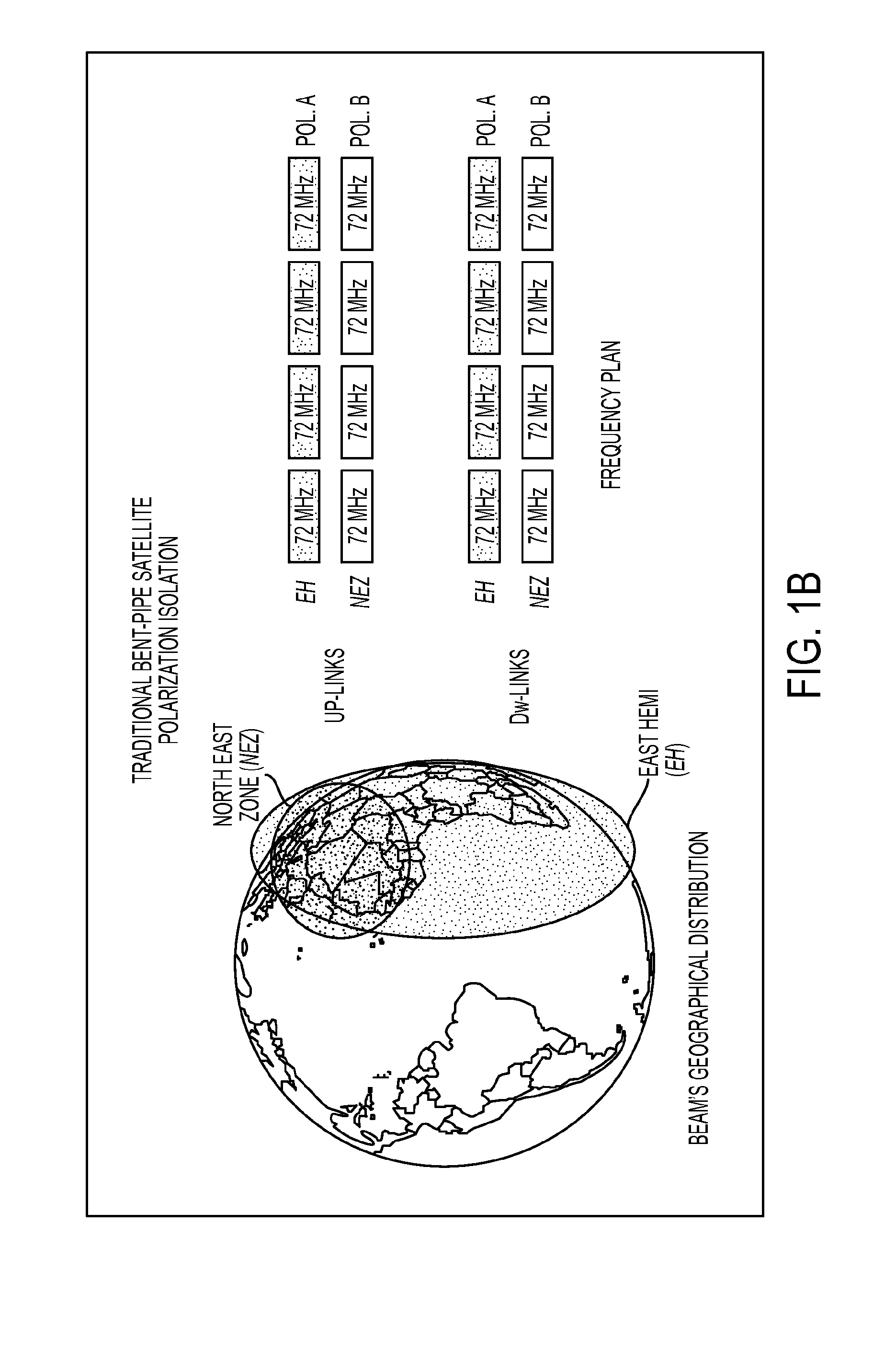System and method for canceling co-channel interference on-board a satellite
a satellite and cochannel interference technology, applied in the direction of transmission monitoring, orthogonal multiplex, polarisation/directional diversity, etc., can solve the problem that the beam isolation provided by the satellite antenna alone may not always be sufficient to obtain the desired beam, and the total satellite throughput capacity is limited, so as to minimize the effect of cochannel interferen
- Summary
- Abstract
- Description
- Claims
- Application Information
AI Technical Summary
Benefits of technology
Problems solved by technology
Method used
Image
Examples
Embodiment Construction
[0057]The present invention will now be described more fully with reference to the accompanying drawings, in which exemplary embodiments of the invention are shown.
[0058]In the following description, matrix algebra is used to model and describe operations on signals. Lower case bolded variables, such as r represents signals vectors. Upper case bolded variables, such as R, represents matrices of complex (e.g., having both gain and phase) channel factors.
[0059]It is common for satellites to utilize different uplink and downlink frequencies, and intermediate frequencies within the satellite, which requires frequency shifting operations in the satellites, ground stations and / or both. Such frequency shifts are ignored for the purposes of describing the present invention.
[0060]As illustrated in FIG. 3, one embodiment of the present invention provides a system 200 for canceling co-channel interference, employed on-board a satellite 20, which compensates the co-channel interference arising ...
PUM
 Login to View More
Login to View More Abstract
Description
Claims
Application Information
 Login to View More
Login to View More - R&D
- Intellectual Property
- Life Sciences
- Materials
- Tech Scout
- Unparalleled Data Quality
- Higher Quality Content
- 60% Fewer Hallucinations
Browse by: Latest US Patents, China's latest patents, Technical Efficacy Thesaurus, Application Domain, Technology Topic, Popular Technical Reports.
© 2025 PatSnap. All rights reserved.Legal|Privacy policy|Modern Slavery Act Transparency Statement|Sitemap|About US| Contact US: help@patsnap.com



